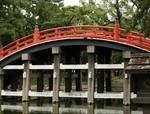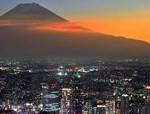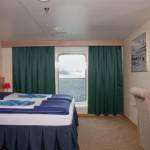- Home
- About us
- Destinations
- Walking holidays
- Walking Slovenia with Aussie Explorers
- Northern Lights Norway coastal cruise by Hurtigruten and Aussie Explorers
- Norway in a Nutshell! Oslo to Bergen 7 days
- Shin Etsu Trail Japan
- Bhutan explorer and Bumthang Owl Trek
- Great Ocean Walk
- Annapurna circuit
- Camino de Santiago or St James Way
- Cape to Cape track
- Mont Blanc circuit walking through Italy, France, Switzerland
- Aussie Explorers
- Blogs
- Travel Blogs
- Time to Cruise
- Grouse Grind
- Golden rules of watching wildlife
- Best Hotel Rooftop Bars
- What to know before you visit North Korea
- Best Towns in Central America
- Top places to visit in Botswana
- Top free things to do whilst travelling
- Le Puy en Valley to Conques 190km 13 days
- Aussie Explorers Victoria Falls to Cape Town
- Hiking Blogs
- Bushwalk goes bad
- Grouse Grind
- South Coast Track Tasmania
- Great Wall of China most spectacular wild hikes
- Snow Shoe Kosciuszko
- Larapinta Trail
- Trekking India: Top 5 destinations
- Wollangambe crater
- Narrow Neck to Tarros Ladder
- Kanangra Walls to Crafts Walls
- Wild Dog Mountains walk
- Jagungal Wilderness area Round Mountain Trail
- Great Ocean Walk blog
- Travel Blogs
- Cycling Holidays
- Cycle Burma 14 days
- Cycle Argentina Chile
- Cycle Bangkok to Phuket
- Cycle China 15 days
- Cycle Cuba 8 days
- Cycle India 15 days
- Cycle Pakistan Kyrgzstan China
- Cycling Germany to Austria
- Cycling France
- Cycling in Turkey
- Cycling Turkeys Back Roads
- Cycling France Burgundy
- Cycling In France Loire Valley
- Cycling Italy
- Cycling Dolomites to Lake Garda
- Cycling Spain Ronda to Seville
- Cycling Croatia
- Cycle Cuba 8 days
- Cycling Spain Catalonia
- Cycling Turkeys Back Roads
- Cycling Albania
- Cycling Spain Catalonia
- Contact

Bonnie Scotland visit the highlands and rugged coast of Scotland

Explore somewhere closer to home New Zealand
-
Mandalay – Sagaing – Ava – Amarapura – Mandalay – Pyin Oo Lwin – Hsipaw – Lashio – Muse – Jiegao – Ruili – Tengchong – Baoshan – Dali – Kunming
Just a few years ago travelling from Mandalay to Kunming would have been all-but-impossible. Now, this ancient Asian trading route is accessible in one incredible 13-day itinerary. From Mandalay, travel north along the ‘Burma Road’ to the former capitals of Ava, Sagaing and Amarapura, and onwards to the colonial hill station of Pyin Oo Lwin. Take an incredible train journey deep into northern Myanmar before crossing into China. Then explore the volcanoes and hot springs Tengchong, the markets of Ruili and culture of the Dai people, en route to Dali and Kunming.
-
Day 1 – Arrival Mandalay
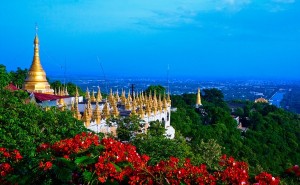 Upon arrival, begin your sightseeing tour of Mandalay with a visit to Mahamuni Pagoda. This pagoda is home to one of the country’s most revered Buddha images which, over the years, have been covered with gold leaf giving it an almost ‘lumpy’ texture. Mandalay is well known for its skilled craftsmen and as you tour traditional workshops, you will learn more about the city’s cottage industries. Observe the production of wood carvings, kalaga tapestries, and gold-leaf where the techniques remained unchanged from those used centuries ago to craft items for the Royal Court.
Upon arrival, begin your sightseeing tour of Mandalay with a visit to Mahamuni Pagoda. This pagoda is home to one of the country’s most revered Buddha images which, over the years, have been covered with gold leaf giving it an almost ‘lumpy’ texture. Mandalay is well known for its skilled craftsmen and as you tour traditional workshops, you will learn more about the city’s cottage industries. Observe the production of wood carvings, kalaga tapestries, and gold-leaf where the techniques remained unchanged from those used centuries ago to craft items for the Royal Court.
This afternoon, continue your tour of Mandalay with a visit to Kuthodaw Pagoda, whose 729 marble stone slabs of Buddhist scriptures have earned it the title ‘World’s Biggest Book’. Continue to Shwenandaw Monastery, the only remaining building from the 19th century Royal Palace. This grand teak building is known for its exquisite woodcarving.Head to the top of Mandalay Hill as the sun begins to set to enjoy magnificent views of the city and Irrawaddy River.
Overnight in Mandalay.
Day 2 – Mandalay – Sagaing – Ava- Amarapura – Mandalay (B)
 After breakfast at the hotel, depart for an excursion around Mandalay to explore the former capitals of Ava, Sagaing and Amarapura.
After breakfast at the hotel, depart for an excursion around Mandalay to explore the former capitals of Ava, Sagaing and Amarapura.
This morning, cross a bridge over the Irrawaddy River to Sagaing. Covered with 600 white-painted pagodas and monasteries, Sagaing Hill is widely regarded as the religious center of Myanmar. It is home to 3,000 monks and 100 meditation centers and you will visit pagodas such as Swan Oo Pon Nya Shin and U Min Thone Sae.
We’ll also visit Sagaing’s local market, a typical Burmese market that few tourists visit. Here you will find a range of items for sale including locally made pottery, silver and other handicrafts. We will also stop at a small pottery village to see the process of making the ubiquitous water pots found throughout Myanmar.
Then continue south of the city to Ava, the capital from 14th to 18th centuries, where a short ferry ride will take us across the river to where our horse and carriage are waiting. Visit the old wooden Bagaya Monastery and the remains of the Royal Palace and Fort. There are many small villages located amid Ava’s ruins and as you travel by horse and cart you’ll get a glimpse of local life in the Burmese countryside.Return toward the city and stop at Amarapura, a former capital whose name means ‘City of Immortality’. First visit a silk weaving workshop which produces exquisite handmade products and then visit Mahagandayon monastery, when over one-thousand monks reside. After touring this tranquil site, continue to U Bein Bridge for a walk along this 200 year-old teak bridge. The bridge was constructed of 984 teak posts that were once part of the deserted Inwa Palace and it is 1.2 kilometers in length making it the world’s longest teak span. Enjoy a stroll along the bridge and the fabulous views of the surrounding farms and streams.
Return to Mandalay late this afternoon.Overnight in Mandalay.Day 3 – Mandalay – Pyin Oo Lwin
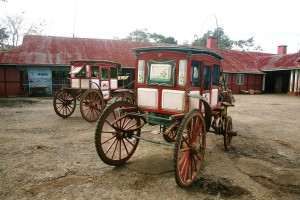 This morning, leave Mandalay for a scenic two-hour drive to the former British hill station of Pyin Oo Lwin (also known as Maymyo) located on a plateau 1,000m above sea level. Many reminders of the colonial era are still present in Pyin Oo Lwin, including brick and timber houses.
This morning, leave Mandalay for a scenic two-hour drive to the former British hill station of Pyin Oo Lwin (also known as Maymyo) located on a plateau 1,000m above sea level. Many reminders of the colonial era are still present in Pyin Oo Lwin, including brick and timber houses.
Pyin Oo Lwin is home for many ethnic tribes as well as a considerable numbers of Nepalese and Hindu who migrated during the British occupation, famous for its climate weather.
Enjoy a traditional horse cart and carriage ride through town. Stop at the Botanical Gardens, 432 acres of leafy gardens home to a diverse mix of botanical species from around the world. The Gardens were established by Sir Harcourt Butler, former Governor of Burma.
Continue to the local market to see the multicolor flowers and vegetables on sale.
Overnight in Pyin Oo Lwin.Day 4 – Pyin Oo Lwin – Hsipaw (B,L)
After breakfast at hotel, transfer to the railway station for a 6-hour train journey to Hsipaw. The scenic journey crosses the famous Gokteik Viaduct which spans a 300-meter deep gorge in the Shan mountains. The views from the train are spectacular, so be sure to have your camera ready.
Lunch-box on board.
Arrive this afternoon in Hsipaw, a pleasant small town on the banks of the Dokhtawady River. Take a short evening walk around Hsipaw.
Overnight in Hsipaw.Day 5 – Hsipaw – River trip – Hsipaw (B,L)
Wake up early this morning and walk through the ‘candlelight market’. This busy morning market is filled with people from the nearby villages- including Shan and Palaung hilltribes- who gather in the predawn hours to trade their wares and produce. The market usually lasts from 3.30 until around 6 AM- thus, the stalls are illuminated by candlelight! If you wish, try a bowl of local Shan noodles here before returning to the hotel.
After freshening up at the hotel and having breakfast, we’ll set off for a boat journey along the Dokehtawaddy River. It’s a 15 minute walk to the river jetty where our private longtail boat is waiting. Cruise upstream for around 30 minutes to a fruit plantation where we’ll disembark for a walk through the plantation, village and then up to a 150-year old monastery (40 minutes walking time) After visiting the monastery, return to the boat.
The next part of our boat trip takes us to the confluence of the Dokehtawaddy River where we’ll stop for a swimming break and to take photos of the beautiful setting.
Continue to a hilltribe village where lunch will be served. Take a stroll around the village to meet with the locals and learn more about their culture, traditions and lifestyles.
Then return by boat to Hsipaw and walk to your hotel. The whole journey takes around 5 hours, so we’ll return in the mid afternoon.
Wander around the town and enjoy the sunset views over the river from one of the many hilltop temples.
Overnight in Hsipaw.Day 6 – Hsipaw – Lashio (B)
After your breakfast, we will check out the hotel and take about 4 hours drive to Lashio, the trading city for northern Shan state.
Upon your arrival, we will visit Lahio Quan Yin San Chinese temple then visit 2500 Pagodas which you can enjoys the overview of Lashio. Take a breath taking break then we’ll visi Pyi Lon Chan Thar and Mansu Pagoda which are over 250 years old.
This afternoon is at your leisure and overnight in Lashio.Day 7 – Lashio – Muse – Jiegao – Ruili (B)
Early breakfast this morning and leave the Lashio to Muse for boarder crossing.
Border crossing at Jiegao (the procedures take around an hour), welcome by your Chinese guide and journey to Ruili. Located in the western part of Yunnan province, it is a key area on the « Southern Silk Road » that connected Myanmar to Yunnan, and on to the Tibetan world (the northern route crosses the northern, sometimes desert, zones of China and through to Central Asia).
You will make a small detour to take in the famous banyan trees of the One Tree Forest, located an approximate twenty minute drive from Jiegao, before going on to visit Moli (taking another twenty minutes to reach), a tropical rainforest boasting more than 1500 varieties of plant and 500 species of flower. The Zhaduo waterfall is the reason for the park’s fame, principally because of the role it plays in the history of Buddhism (Buddha came here to train some wild elephants, who built this “basin” to show their gratitude). The visit will last around 2.5 hours.On to Ruili (taking around 40 minutes). Settling in at the hotel and visit to the town. Formerly a crossroads for all kinds of trafficking (drugs, animals, and precious stones amongst other things), Ruili is now almost entirely clear of its toxic reputation. The population is a mix of Han Chinese, minorities (Dai, Deang, and Jingpo), and Burmese merchants who sell their goods from the many stalls, notably wooden sculptures and jade products (highly valued in the region), amongst other things.
Stroll along the palm tree lined streets, bustling with rickshaws and a visit to the jade market. Evening visit to the famous, colourful night market (which is along ‘Mengmao’ Road, the name given to Ruili by the Dai people), the street perfumed by the smell of Burmese cuisine, and the visiting Thai and Pakistani merchants showing off Ruili’s cosmopolitan charm.
Night in Ruili.Day 8 – Ruili – Tengchong (B,L)
Your day will start with a trip to the Jiele Golden Pagoda (located 7km from Ruili), the main Buddhist building of the area which has been destroyed and rebuilt on numerous occasions. The most recent reincarnation is the most faithful to the original style of the building, and is of typical Burmese design (and of that of part of South East Asia) with a central pagoda (40m high) and 16 smaller pagodas around it.
Visit to neighbouring villages, populated in the majority by people of the Dai Minority (who number around 1.2 million, the lion’s share of whom live in the Xishuangbanna region, close to the borders with both Burma and Laos). The Dai are part of the Thai linguistic family, practice the same type of Buddhism as their Thai cousins, and like them celebrate the Water Festival (amongst other festivals).
Note: The Water Festival lasts around three days and takes place in mid-April.
You will start in Nongan, known for its “Golden Duck Pagoda”, so named, according to the legend, thanks to the timely arrival of two ducks who saved this marshy region… You will pass through the villages of Jiexiang and Nongdao, overflowing with small markets, temples (notably the Denghanong sanctuary), and stupas. You will then arrive at Jiedong, the home of the Hansha Temple, made of bamboo boards, built on stilts, and known for the huge Buddha statue located in its centre.
On to Tengchong, located less than 300km away, taking four or five hours not including stops. This superb road follows a tropical path, surround by green mountains and bordered by palm trees, banyan trees, bamboo, rubber trees and sugarcane. The first stop is in the neighbouring district of Longchuan, one of the main centres of the small Jingpo minority (numbering less than 150,000 people, the majority of whom are found in Myanmar where they are known by the name of “Katchin”) and the Achang (less than 50,000 people), known amongst other things for their ability in the art of cutlery making (the husa knives are famous in the region).
The next stop is at Yingjiang where you will visit the Yunyan Pagoda, built to appease water demons and combat plague. Finally, you will stop in Lianghe, full of beautiful wooden houses and where you will visit the Former Residence of Tusi, a high ranking civil servant from times gone by.
At the end of the day you will arrive in Tengchong, a part of the old “Southern Silk Road”, where the most traded commodity was Burmese jade. The British even built a consulate here to try to extend their influence over the bordering Myanmar. Tengchong was also a strategically important place during the Second World War, and the WWII Cemetery located here commemorates the battles that took place between American and Chinese forces and the Japanese Army. Settling-in at the hotel.
Night in Tengchong or in the neighbouring village of Heshun, depending on the category of hotel you have chosen.Day 9 – Tengchong (B,L)
Visit to the neighbouring village of Heshun (4km away), a former hideaway for overseas Chinese during the Second World War. Heshun became rich thanks to its trade links with Myanmar and is known for its labyrinth of paved roads, lined with traditional wooden houses that call to mind an old-worldly China. Visit to the daily market, to the stunning Library (the richest in rural China, with over 60,000 volumes) which is financed by overseas Chinese, and to one of the many Ancestor-worship Temples.
You will also visit the Sino-Burmese anti-Japanese War Museum that amply demonstrates the strategic geographical importance of Heshun on the road to Burma.Lunch comprising of traditional Tengchong food, famous throughout Yunnan.
The region of Tengchong is first and foremost known for its volcanoes and hot springs, numbering 40 volcanoes and 80 hot springs spread over a 750km2 area. Journey on to the village of Mazhan (located 22km from Tengchong), our starting point for the visit to the largest concentration of volcanoes in the region. Ascent up Dakongshan, which towers over the volcanoes and from which you can appreciate the crater on “black hollow hill” and the surrounding lava fields.During your visit you will be able to take in the Black Fish River, known for its crystal-clear waters and which takes its name from the thousands of black fish that occupy it year after year. Visiting this site takes around one hour.
Return to Tengchong and the Hot Sea Park, where a large number of natural sources of hot water are clustered, and which can be appreciated from a distance thanks to the columns of steam they let off, and where you will have the opportunity to unwind to finish off the day.
Night in Tengchong.Day 10 – Tengchong – Baoshan (B)
Journey to Baoshan, located around 160km away and taking between three and four hours on the road, not including the stops. Stop at the Gaoligong Natural Reserve, home to 300 species of bird over its 12,000 hectares set against the backdrop of the Gaoligong mountain chain (the highest peak among its mountains reaches over 3900m in altitude). The visit takes between two and four hours depending on both your level of fitness and your wishes.
Arrival in Baoshan, the largest city in Western Yunnan, which also owes its development to the Southern Silk Road, in addition to the Nujiang River to the west and the mythical Mekong river to the East.Meeting wih a local coffee producer, a Baoshan specialty (coffee was imported into South East Asia in the 50s).
Night in Baoshan.Day 11 – Baoshan – Dali (B)
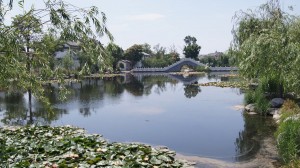 Journey to Dali (170km, taking around 3 hours), with an en route visit to the Reclining Buddha Temple (16km from Baoshan), built into the mountain and that overlooks a cave studded with stalactites. This reclining statue of Buddha in white jade and a gold tunic is the largest statue of its type in China (6 meters long).
Journey to Dali (170km, taking around 3 hours), with an en route visit to the Reclining Buddha Temple (16km from Baoshan), built into the mountain and that overlooks a cave studded with stalactites. This reclining statue of Buddha in white jade and a gold tunic is the largest statue of its type in China (6 meters long).
Dali is home to the Bai minority and was a stronghold of the kingdom of Nanzhao (738-902) and epicentre of the Dali Kingdom (937-1253). The region, notably the shores of the Erhai Lake (literally the Ear Shaped Lake), and the surrounding areas where bronze dating back to 1000 BC has been found, played a strategic role in Yunnan’s history. The Bai (who nowadays number less than 2 million) first settled in the region more than 3000 years ago and their first dwellings surrounded the lake. The Bai are most distinguishable by their clothing – predominantly white (from which the Bai take their name, “Bai” means white in Chinese) and by their homes, which are very particular to this region and you will be able to see example of these in Dali old town.
We will visit for the Three Pagodas at the Chongsheng temple, situated around 13 away from Dali old town.The temple is a mystical emblem of the town and stands proud at the foot of the Changshan Mountains. The Pagoda of the Thousand Awakenings was built in the ninth century and designed by an engineer from Chang’an (nowadays known as Xi’an) and is characterized by its square plan, similar to that of the Wild Goose Pagoda found in the ancient imperial capital, symbolising the influence the Chinese Tang Dynasty in the region.
Night in DaliDay 12 – Dali – Kunming (B)
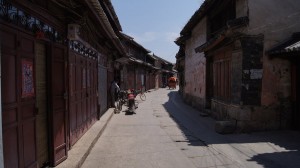 Visit of the daily market in Xizhou in one the village around Erhai lake, a very well persevered Bai arhictecture village located 18km in the norh of Dali.
Visit of the daily market in Xizhou in one the village around Erhai lake, a very well persevered Bai arhictecture village located 18km in the norh of Dali.
Note: this itinerary can be done by bicylcle along the lake. Please consult us
We will then head on to the old town of Dali, where you can still find some typical Bai homes. Stroll in old town, a relaxed and warm atmosphere seems to ooze from these white walled homes, on which you can find paintings representing mountains, running water, birds and flowers. Their front porches, famous throughout the country, are distinguished by their beautifully carved arches.Visit of the Catholic church that mixes Bai and European architecture styles.
Afternoon at leisure.Note: Cangshan mountains are 2 km west of Dali and the backdrop of Dali city. The site offers many different trekking paths and great views on Dali & Erai lake. Please consult us if you want to add a hike.
Transfert to train station for a night train in a sleeper cabin to Kunming (taking between 7 and 8 hours). In China, the train is the meeting place of the Chinese. People board the train, eat containers of instant noodles with water from their thermos in hand, gulp down unbelievable quantities of sunflower seeds, play cards, and clink glasses of beer or baijiu, the country’s rice liquor.
Overnight in KunmingDay 13 – Kunming (B)
Early arrival in Kunming. Transfer to your hotel to take a shower and enjoy breakfast.Your day will begin with a short walk in Green Lake Park (also known as Cuihu Park), letting you get a feel for the atmosphere of Chinese parks in the morning. The real early birds start their day with taiqi or qigong, both types of physical exercise which they consider vital to their health and well-being. Others engage in a friendly game of Chinese chess, Go (an ancient Chinese board game), or Mah-jong: a piece of true theatre on the banks of the lake which in summer is covered by lotus-flowers and in winter flooded with seagulls. For those who have been to China before, you have probably experienced Chinese park culture in Beijing or another major Chinese city.
Afterwards you will visit the Yuantong Temple (literally meaning “the Temple of understanding everything”). Founded during the Tang Dynasty (618-907), the temple is one of the oldest Buddhist monuments in Kunming and is known for its unique location. It is situated in a natural valley, contributing to the peaceful atmosphere of the temple which is still regularly visited by pelerine monks. You will then visit the Golden Temple (which takes its name from the gold leaf which covers the main pavilion), which is perfectly located on a small hill surrounded by pine and cypress trees. Despite its Buddhist influence the temple is dedicated to Taoism, letting you take a peek at another fundamental pillar of traditional Chinese belief. From here, you will move on to the Yunnan Provincial museum, an essential stop for anyone wishing to truly understand the characteristically multi-ethnic nature of this region. China has 56 different officially recognised minority groups, but during this trip you will mainly learn about the Yi (the largest minority in Yunnan), the Hui Muslims, the Buyi, the Bai, the Hani and the Naxi. The museum has a beautiful collection of finery and traditional dress along with a relatively clear explanation of popular art forms.
Option: Dinner will be at the 1910 South Railway Station Restaurant. We suggest this pleasant colonial style restaurant in order to highlight an oft forgotten period of this province’s history. China was never fully colonised (at least by Western powers) unlike some of its neighbours in South-East Asia, but Concessions were granted to Western powers during the 19th century, one of the best known being in Shanghai. In 1910 the French launched a mammoth project in order to advance their expansionist desires by linking Hanoi, the capital of Vietnam and at the time a French protectorate, to Kunming.
Note: Please consult us if you want to replace this city tour by a day trip in the Stone forest.Overnight in Kunming
Day 14 – Kunming departure (B)
Transfert to Kunming airport and flight to your next destination.
-
Tour Duration: 14 Days / 13 Nights
Tour Operates: Year Round / On Demand
Tour Price: Available Upon RequestRates vary frequently. Please conatct us to get the best possible price based upon your travel period and specific touring needs.
Our services include:
12 night’s accommodation in a shared twin room or shared double room with daily breakfast
English-speaking guide throughout guides
All transfers and excursions with private air-conditioned vehicles with drivers
Private local boat and horse cart
Porter fees at airports
Entrance fees for the visits mentioned in the program
Water and refreshing towelMeals as mentioned in the program (B = breakfast, L = Lunch, D = Dinner)
Our services do not include:
International ticket to/from Yangon
Meals other than mentioned (B = Breakfast, L = Lunch, D = Dinner)
Visa arrangements for Myanmar
Fuel Surcharge for domestic flights
Visits not mentioned in the program
Drinks and personal expenses
Tips and porters at the hotels
Credit card fees (4%) or bank transfer fees for non-cash payments
Any other items not mentionedCreating Unique Touring Experiences
All the touring itineraries on this website have been carefully crafted by our in-country management teams and represent a series of experiences we can certainly recommend. However, we understand that every travel experience should be as unique and individual as each traveler. Our consultants are waiting to hear from you so that we can tailor or custom design a Myanmar tour to your individual specifications.
Social Share
About Us
Discovery Travel is a fully licensed Travel Agent, a paid member of the Travel Compensation Fund meaning you are safe and secure booking through Discovery Travel.
Proudly powered by Travel Partners.
(+61) 0402 251036
Level 12, 447 Kent Street,
Sydney NSW 2000
info@discoverytravel.com.au
Contact Us
CopyRight© 2012-2015 www.discoverytravel.com.au All Rights Reserved.






